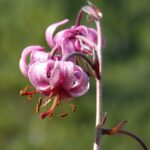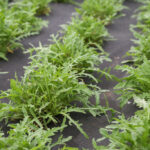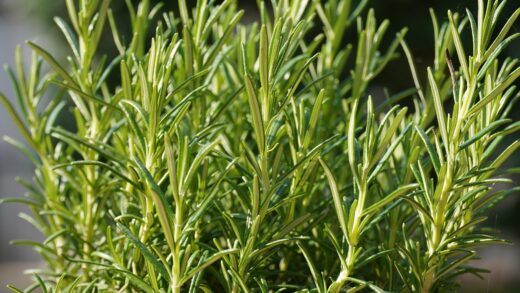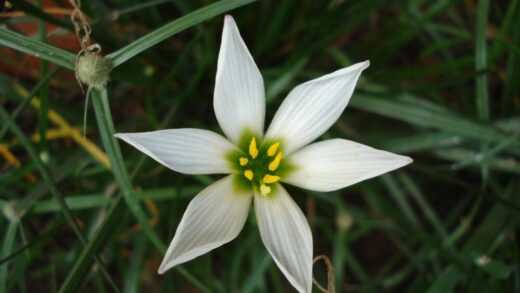The care of primrose

Primroses, belonging to the extensive Primula genus, are cherished for their vibrant, often early-season blooms that signal the end of winter. Proper care is essential to ensure these perennials thrive and return year after year with a spectacular floral display. This involves understanding their native woodland-edge habitats to replicate the conditions they prefer, which typically include cool temperatures, dappled sunlight, and consistently moist, well-draining soil. Effective cultivation hinges on a balanced approach, providing the right environment, adequate nutrition, and timely maintenance to foster robust growth and prolific flowering. Mastering the fundamentals of primrose care allows gardeners to enjoy the full diversity and beauty this genus has to offer, from the common garden primrose to more specialized alpine varieties.
The diversity within the Primula genus is vast, encompassing over 500 species with a wide range of characteristics, from the familiar polyanthus types with their clusters of flowers on a single stem to the candelabra primroses that produce tiered whorls of blooms. Understanding the specific group your primrose belongs to can provide crucial insights into its particular needs, as some, like the auriculas, require more alkaline conditions and sharper drainage, while others, such as Primula japonica, thrive in boggy, acidic soils. This knowledge informs decisions about placement, soil amendments, and watering schedules. It’s beneficial to research the specific variety you are growing to tailor your care regimen for optimal results, ensuring the plant’s long-term health and vitality in your garden.
Successful primrose cultivation begins with a deep appreciation for their natural life cycle and environmental preferences. Most primroses are cool-season perennials, experiencing their most active growth during the spring and autumn months while often entering a state of semi-dormancy during the heat of summer. Replicating these cool, moist conditions is the cornerstone of effective care, as heat stress and drought are primary factors in their decline. Therefore, selecting a planting site that offers protection from harsh afternoon sun and ensuring the soil remains consistently hydrated are non-negotiable aspects of their management. By aligning your gardening practices with their innate rhythms, you create an environment where they can not only survive but truly flourish.
Ultimately, the goal of primrose care is to establish a self-sustaining and resilient plant that requires minimal intervention over time. This is achieved through careful initial site selection and soil preparation, followed by consistent, thoughtful maintenance. A healthy primrose is better equipped to resist pests and diseases and will reward the gardener with an increasingly impressive display each spring. Paying close attention to the plant’s signals—such as leaf color, turgor, and flower production—can help you fine-tune your care practices. This proactive and observant approach is the hallmark of a successful primrose enthusiast, leading to a long-lasting and beautiful addition to any shade garden or woodland planting scheme.
Understanding the primula genus
The Primula genus is exceptionally diverse, containing species adapted to a wide array of environments, from alpine rock crevices to moist woodland floors and boggy streamsides. This diversity means that a one-size-fits-all approach to care is rarely successful; for instance, the needs of a tough, drought-tolerant Primula auricula are vastly different from those of a moisture-loving Primula florindae. Gardeners should identify their specific type of primrose to understand its origins, which will provide the best clues for its ideal growing conditions. Familiar groups include Polyanthus hybrids, known for their large flowers, Acaulis types (the common primrose), Candelabras with their tiered blooms, and Auriculas, which are often grown in specialized theaters. Recognizing these distinctions is the first step toward providing expert care.
More articles on this topic
Delving deeper into the main sections of the genus reveals further nuances in their cultivation requirements. For example, the Vernales section, which includes the common primrose (Primula vulgaris) and cowslip (Primula veris), generally prefers humus-rich, neutral to slightly acidic soil and partial shade. In contrast, the Auriculastrum section, containing many alpine species, demands gritty, well-drained, often alkaline soil and can tolerate more sun, provided their roots stay cool. This differentiation is critical for success, as planting a woodland primrose in a sun-baked rock garden, or an alpine type in a damp, shady border, will almost certainly lead to failure. Proper identification guides every subsequent decision in the care process.
Beyond their environmental preferences, primrose species also exhibit different growth habits and life cycles, which impact their long-term management. Most are herbaceous perennials, dying back to a resting crown in winter, but their longevity can vary. Some, like many modern Polyanthus hybrids, are often treated as biennials or short-lived perennials, while species like Primula sieboldii can spread to form long-lived colonies when happy. Understanding whether your primrose is a clump-former, a running type, or a short-lived specimen will inform how you manage it over the years, including when and how to divide it or whether you should plan for regular replacement.
Finally, appreciating the genus involves recognizing its contribution to garden history and biodiversity. Primroses have been cultivated for centuries, leading to the development of thousands of hybrids and cultivars, each with unique colors, forms, and fragrances. They are also ecologically important, providing an early source of nectar for pollinators like bees and butterflies. By cultivating these plants, gardeners participate in a long tradition and support local ecosystems. This broader context enriches the experience of growing primroses, transforming it from simple horticulture into a more meaningful engagement with the natural world and its history.
Soil preparation and requirements
The foundation of a healthy primrose is the soil it grows in, which must provide a balance of moisture retention and excellent drainage. Most primrose species originate from woodland or meadow environments where the soil is naturally rich in organic matter from decaying leaves and other plant debris. To replicate this, amend your garden soil generously with well-rotted compost, leaf mold, or aged manure before planting. This not only enriches the soil with essential nutrients but also dramatically improves its structure, allowing it to hold moisture without becoming waterlogged. Good structure ensures that the fine roots of the primrose can breathe and access water and nutrients effectively.
More articles on this topic
The ideal soil pH for the majority of primrose varieties ranges from slightly acidic to neutral, typically between 6.0 and 7.0. However, as mentioned previously, certain groups have specific requirements; alpine primulas in the Auriculastrum section, for example, often prefer alkaline conditions. It is wise to perform a simple soil test to determine your garden’s pH level before planting and amend it if necessary. For most common garden primroses, if your soil is overly alkaline, incorporating ericaceous compost or sulphur can help lower the pH, while adding garden lime can raise the pH for those species that require it. Getting the pH right is crucial as it directly affects the plant’s ability to absorb nutrients from the soil.
Drainage is a critical factor that cannot be overlooked, as primrose crowns are highly susceptible to rot if they sit in cold, wet soil, especially during their winter dormancy. If you have heavy clay soil, which is common in many regions, you must take steps to improve its porosity. Incorporating coarse grit, perlite, or small pea gravel along with organic matter will help create air pockets and channels for excess water to escape. Alternatively, planting primroses in raised beds or on slight slopes can be an effective strategy to ensure that water never pools around the base of the plant, safeguarding it from crown and root rot.
For those growing primroses in containers, the principles remain the same but the medium can be controlled more precisely. A high-quality, peat-free multipurpose compost is a good starting point, but it should be amended to improve its structure and drainage. A typical mix might consist of two parts compost, one part leaf mold or coir, and one part horticultural grit or perlite. This blend provides the fertility, moisture retention, and aeration that potted primroses need to thrive. Ensure any container has ample drainage holes at the bottom to allow excess water to exit freely after watering.
Optimal environmental conditions
Primroses are fundamentally cool-climate plants, flourishing in temperatures that are not excessively hot or cold. Their ideal growing environment mirrors that of a temperate woodland edge, characterized by dappled sunlight, high humidity, and protection from extreme weather. The intense heat of the summer sun can be particularly damaging, leading to scorched leaves, wilting, and a decline in vigor. Therefore, selecting a location that receives gentle morning sun but is shaded during the hottest part of the afternoon is paramount for their success in the garden. This is especially true in warmer climates where summer stress is the primary limiting factor for long-term survival.
Air circulation is another important environmental factor that is often underestimated in primrose care. While they appreciate a sheltered location protected from strong, drying winds, stagnant air can create a humid microclimate that encourages the development of fungal diseases like botrytis (grey mold) and powdery mildew. Good air movement around the plants helps to keep the foliage dry and reduces the likelihood of these pathogens taking hold. When planting, avoid overcrowding your primroses; spacing them appropriately according to their mature size ensures that each plant has access to adequate airflow, as well as light and soil resources.
Moisture is a constant need for most primrose species, both in the soil and in the surrounding atmosphere. They thrive in environments with consistent humidity and do not tolerate dry conditions well. Planting them near a water feature, in a naturally damp part of the garden, or alongside other moisture-loving plants can help create a suitable microclimate. During dry spells, it’s crucial to provide supplemental water to maintain consistent soil moisture. This consistent hydration supports lush foliage and is essential for the plant to build up the energy reserves needed for the following year’s flowering.
The winter environment is just as critical as the growing season conditions. While many primroses are fully hardy, they are vulnerable to a combination of cold and wetness. Waterlogged soil that freezes can damage or kill the root system and lead to crown rot. A site with good winter drainage is therefore essential. In regions with very harsh winters, a protective layer of mulch, such as shredded leaves or pine boughs, applied after the ground freezes can help insulate the crowns from fluctuating temperatures and protect them from winter desiccation, ensuring they emerge healthy and ready for spring growth.
Routine maintenance and deadheading
Consistent routine maintenance is key to keeping primroses looking their best and promoting a long flowering season. The most important ongoing task during the blooming period is deadheading, which is the process of removing spent flowers. Once a flower begins to fade, it is best to pinch or snip off the entire flower stalk at its base. This simple action prevents the plant from expending its energy on producing seeds and instead redirects that energy into creating more blooms, often resulting in a second or even third flush of flowers. Deadheading also improves the plant’s appearance, keeping it tidy and preventing the development of fungal diseases on decaying floral tissue.
Throughout the growing season, it is important to regularly inspect your primrose plants for any signs of stress or disease, such as yellowing leaves, spots, or pest infestations. Early detection allows for prompt intervention before a problem becomes severe. You should remove any dead, damaged, or yellowing leaves as they appear by gently pulling them away from the base of the plant. This practice, known as sanitation, not only keeps the plant looking neat but also improves air circulation around the crown and removes potential hiding spots for pests like slugs and snails.
Weed control is another crucial aspect of routine maintenance. Weeds compete with primroses for essential resources such as water, nutrients, and light, and they can quickly overwhelm a planting if left unchecked. Regularly hand-pulling weeds from around your primrose clumps is the most effective and safest method of control, as it avoids disturbing the shallow roots of the primroses. Applying a layer of organic mulch, such as shredded bark or leaf mold, around the plants can also significantly suppress weed growth while simultaneously helping to conserve soil moisture and keep the roots cool.
As primrose clumps mature, they can become congested, leading to reduced vigor and flowering. Dividing the plants every two to four years is an essential maintenance task to rejuvenate them. This is typically done after flowering in late spring or in the early autumn. Division not only revitalizes the parent plant but also provides an excellent opportunity to increase your stock of primroses. By staying on top of these routine tasks—deadheading, sanitation, weeding, and periodic division—you ensure your primroses remain healthy, vigorous, and productive for many years.
Long-term care for perennial varieties
For primroses to establish as true, long-lived perennials, care must extend beyond the initial planting and flowering season. A key aspect of long-term success is providing the right conditions for them to survive the challenges of summer. Many primrose varieties enter a period of semi-dormancy during the hottest months, and it is crucial to protect them from heat and drought stress during this vulnerable time. Ensuring they are in a location with afternoon shade and maintaining consistent soil moisture are the most important factors. A deep soaking once or twice a week during dry spells is far more effective than frequent light sprinklings.
Mulching is a cornerstone of long-term primrose care, offering multiple benefits throughout the year. In summer, a two-inch layer of organic mulch like leaf mold, compost, or shredded bark helps to keep the soil cool and conserves precious moisture, reducing watering needs. In autumn, a new layer of mulch can help protect the plant’s crown from the freeze-thaw cycles of winter, which can heave plants out of the ground. As the mulch breaks down, it continuously enriches the soil with organic matter, mimicking the natural forest floor environment where many primroses originate and supporting a healthy soil microbiome.
Over time, primrose clumps will naturally expand and can become dense and overcrowded in the center. This congestion can lead to diminished flowering, smaller leaves, and an increased susceptibility to pests and diseases due to poor air circulation. To maintain the plant’s vigor, it is essential to divide the clumps every few years. The ideal time for this is typically right after flowering has finished, allowing the new divisions plenty of time to re-establish before winter. Carefully lift the entire clump, gently tease the crowns apart into smaller sections, each with a healthy portion of roots, and replant them immediately at the correct depth.
Finally, long-term success involves adapting your care strategy as the garden environment evolves. Trees and shrubs grow larger over time, which may change the light patterns in your primrose bed from dappled shade to deep shade, potentially reducing flowering. Conversely, the removal of a tree could suddenly expose your shade-loving primroses to harsh, direct sunlight. Be observant of these changes in your garden’s ecosystem and be prepared to move your primroses to a more suitable location if their current spot is no longer ideal. This adaptive management is crucial for ensuring the continued health and longevity of your perennial primrose collection.
Seasonal care considerations
Spring is the season of peak activity for primroses, a time of vigorous growth and abundant flowering. As soon as new leaves emerge, it is important to clear away any remaining winter debris and old foliage from around the crowns to allow for good air circulation and prevent disease. This is also the ideal time to apply a balanced, slow-release fertilizer or a top-dressing of rich compost to provide the nutrients needed to support robust flowering. Monitor moisture levels carefully as the weather warms, ensuring the soil remains consistently moist but not saturated, as the plants are building the energy reserves that will sustain them through the rest of the year.
As spring transitions into summer, the focus of care shifts from promoting flowers to ensuring survival through the heat. For most primroses, flowering will have finished, and the plants will enter a quieter phase, sometimes even dying back slightly. The primary tasks during summer are to provide adequate shade from the intense afternoon sun and to maintain consistent soil moisture through regular watering, especially during periods of drought. It is also a good time to be vigilant for pests like spider mites, which thrive in hot, dry conditions. Deadheading any late or sporadic flowers will prevent seed formation and conserve the plant’s energy.
Autumn provides a second window of opportunity for active primrose care, as cooler temperatures and increased rainfall often stimulate a new flush of root and foliage growth. This is the perfect time to divide any overcrowded clumps that were not split after spring flowering, giving the new divisions ample time to establish a strong root system before the ground freezes. It is also the time to plant new primroses. As leaves begin to fall from surrounding deciduous trees, allow some to remain around your primrose plants to form a natural, insulating mulch that will protect them during the winter.
Winter care for primroses is primarily about protection and ensuring proper drainage. The greatest threat during this season is not the cold itself, but rather the combination of wet soil and freezing temperatures, which can cause the crown to rot. Ensure the planting area drains well and avoid locations where water or melting snow tends to pool. In very cold climates, applying a protective layer of loose organic mulch, such as chopped leaves or pine boughs, after the first hard frost can help insulate the crowns from extreme cold and prevent heaving caused by freeze-thaw cycles. This protective layer should be gently removed in early spring as new growth appears.



















